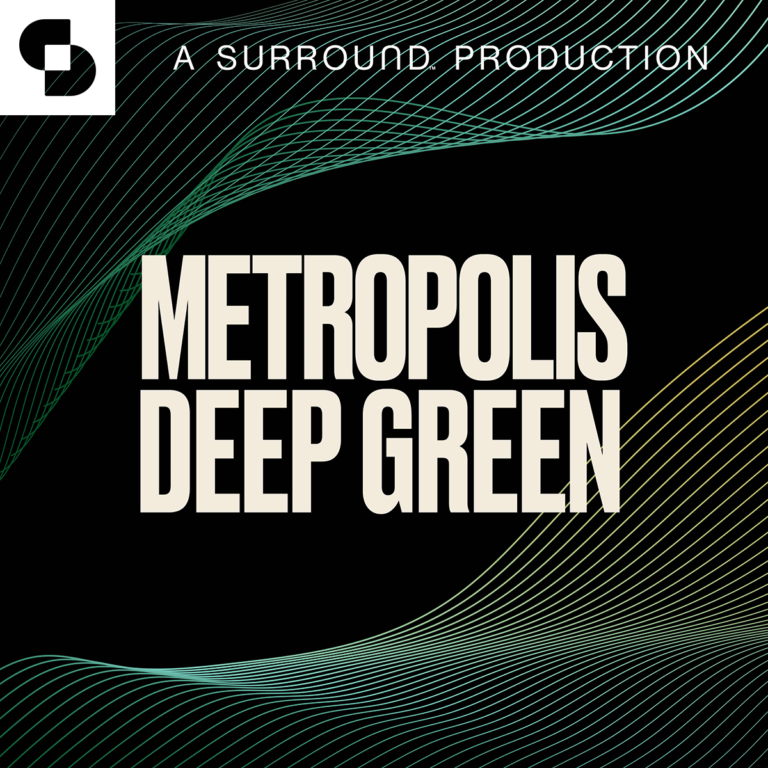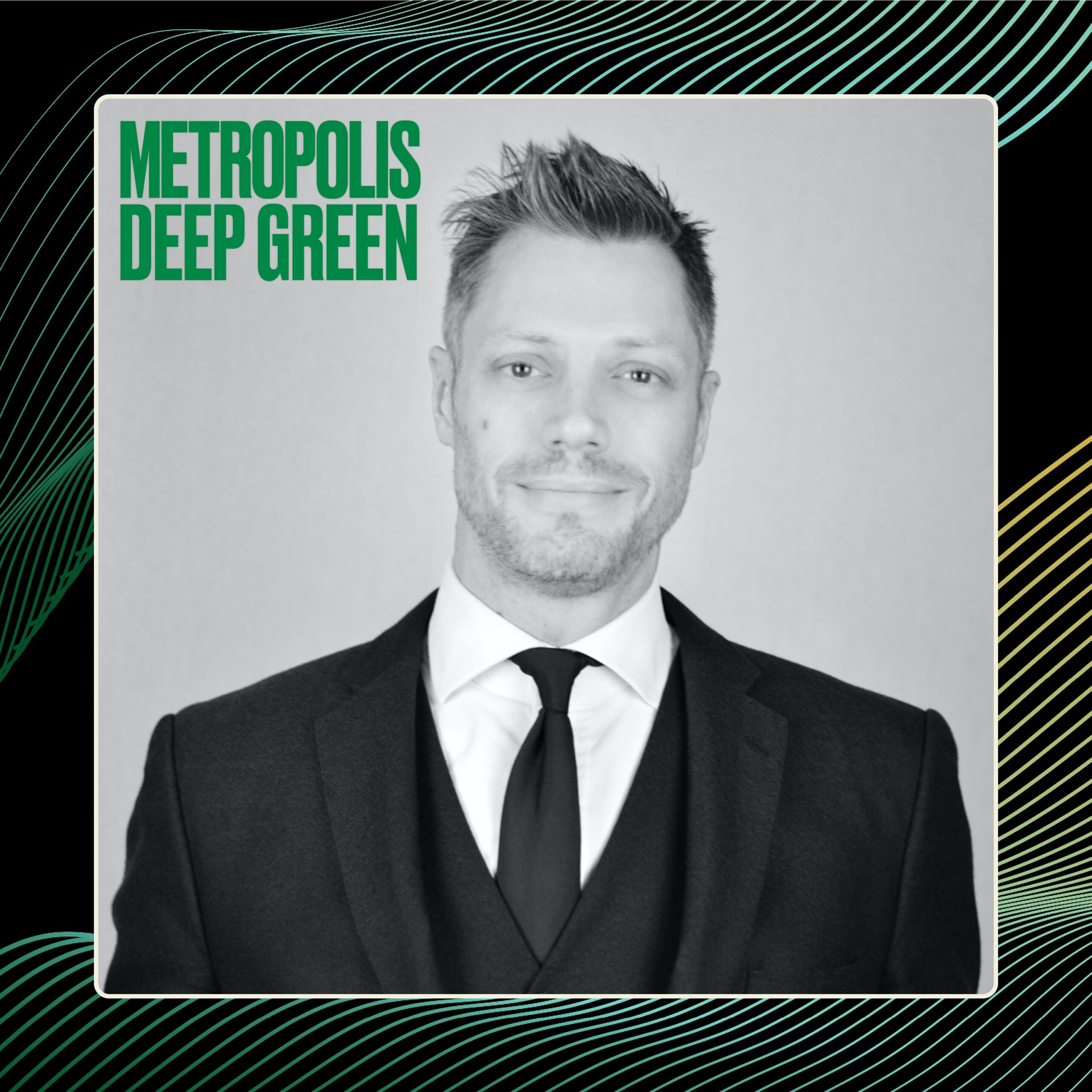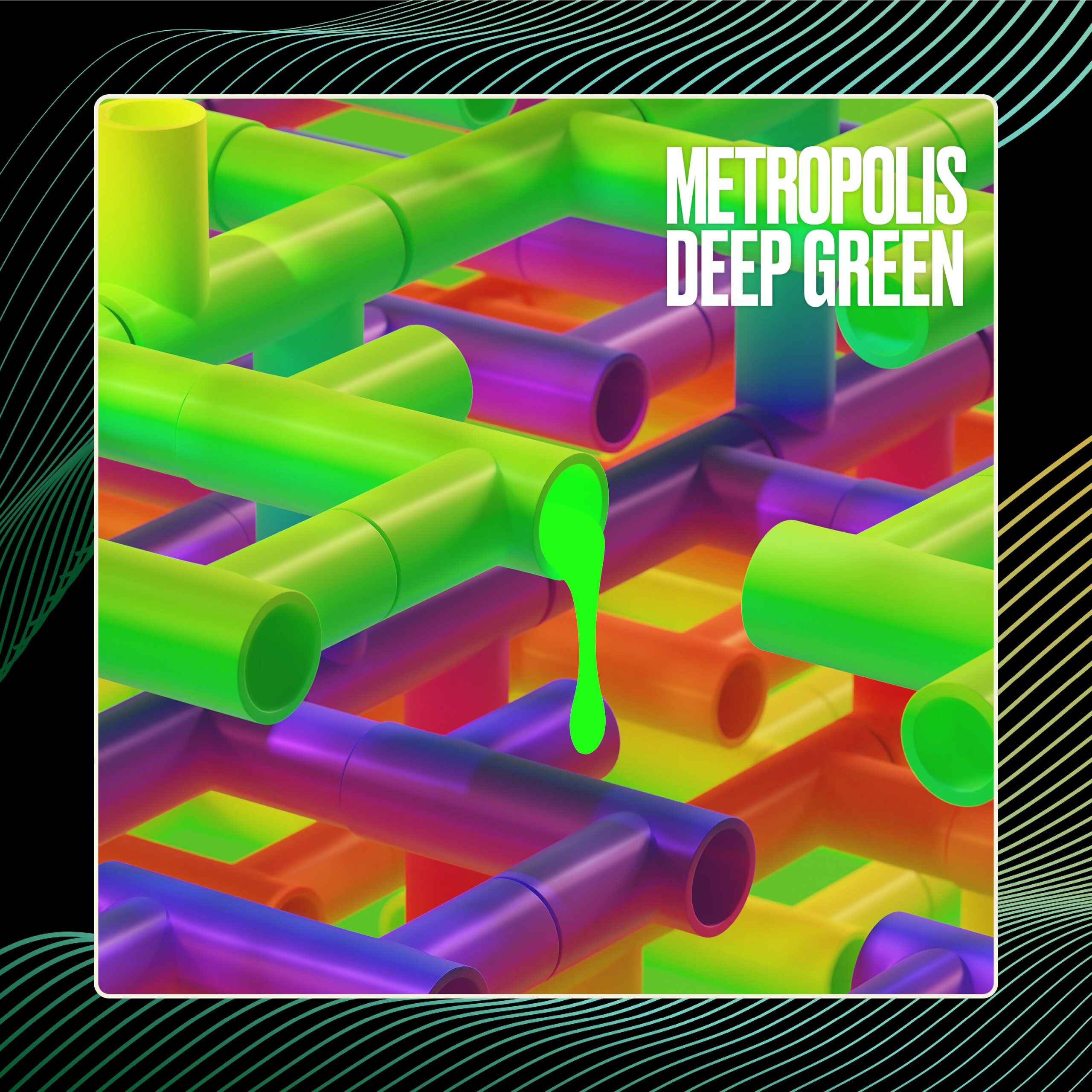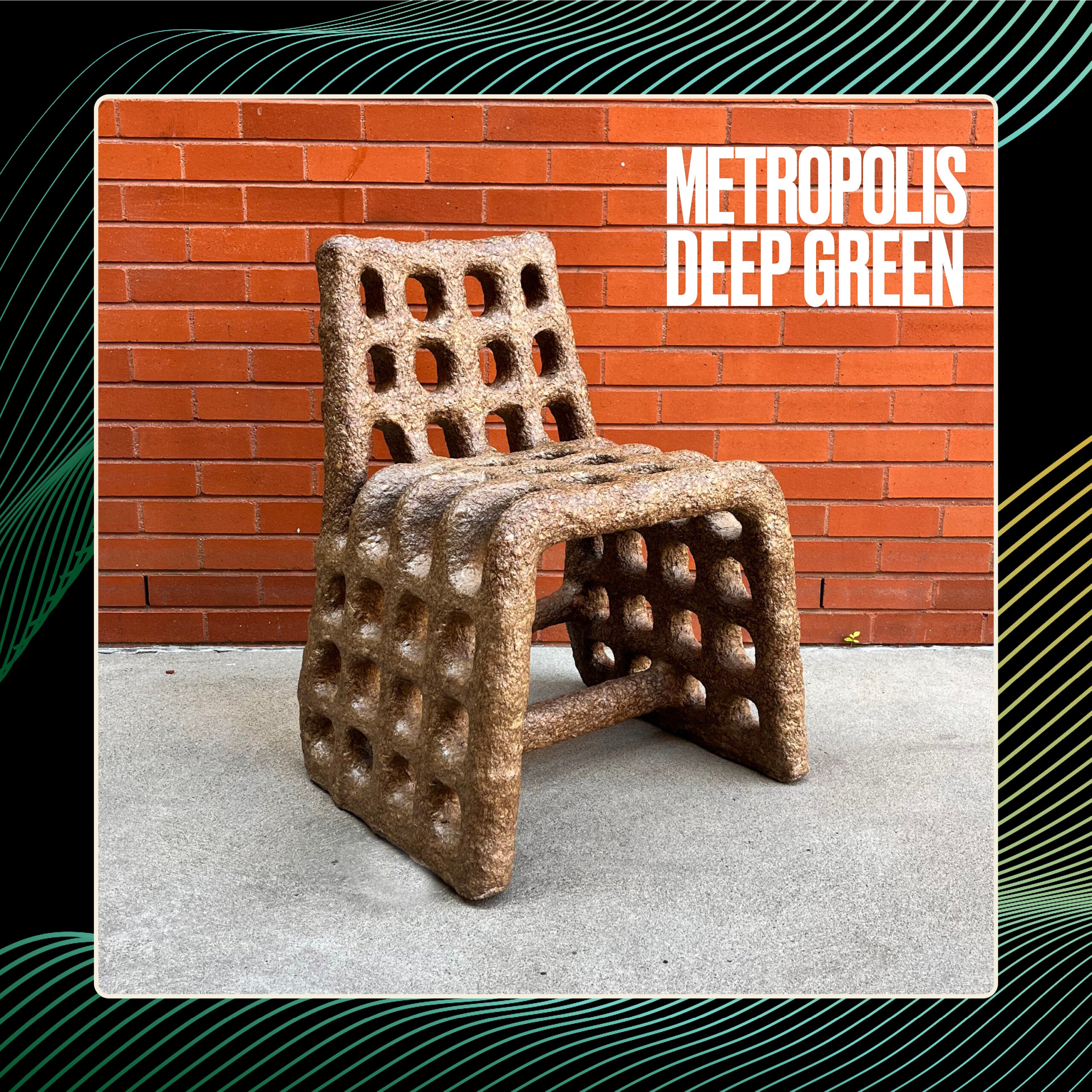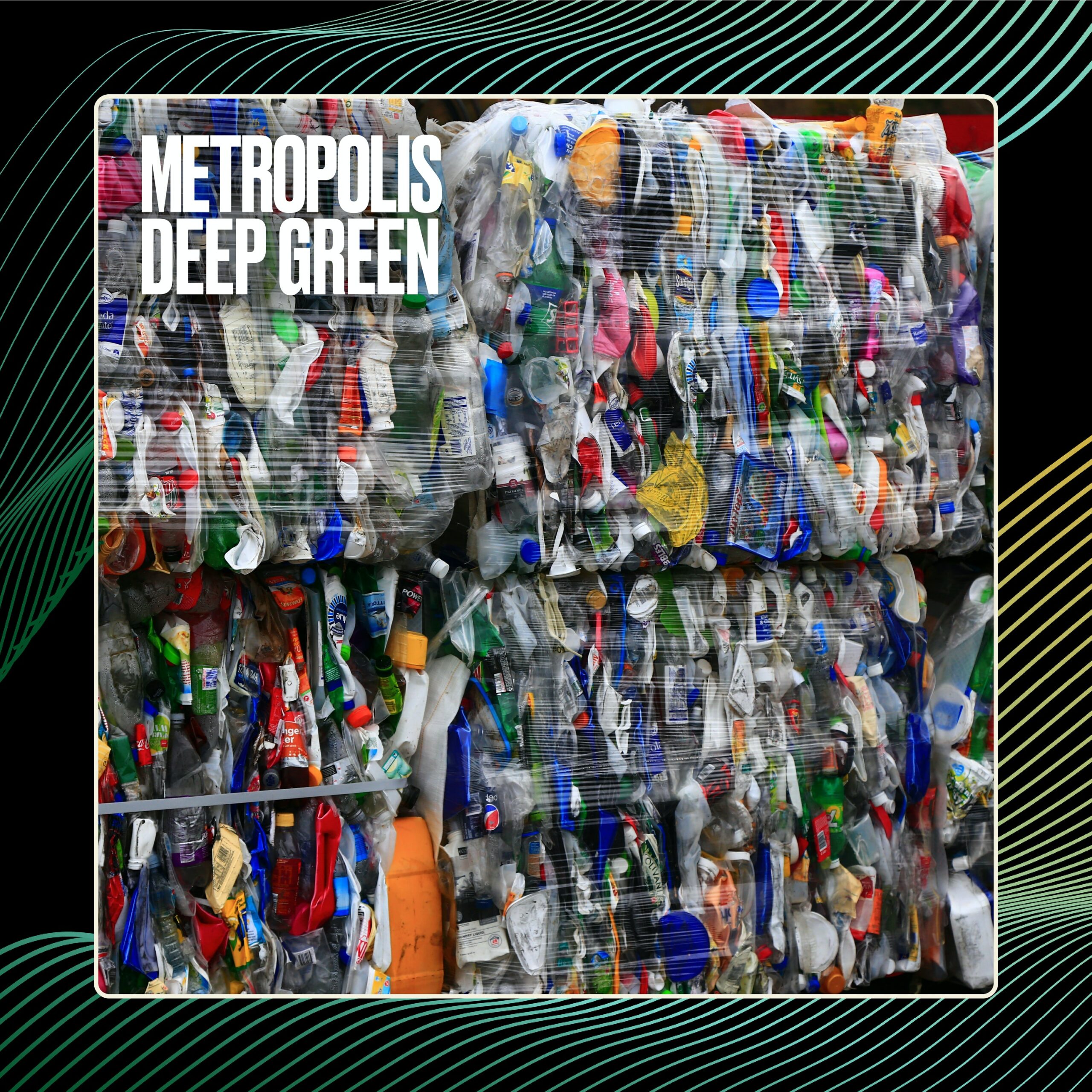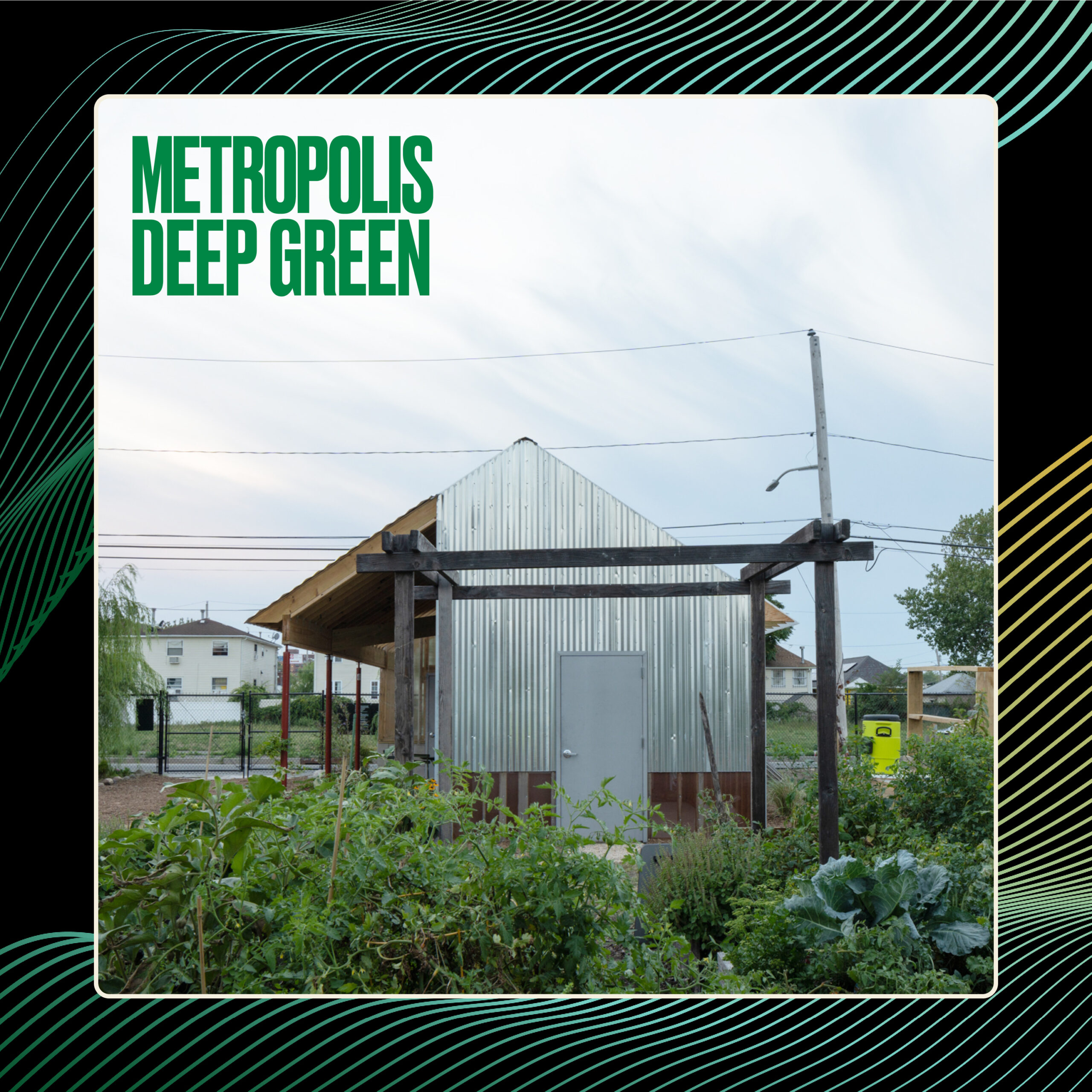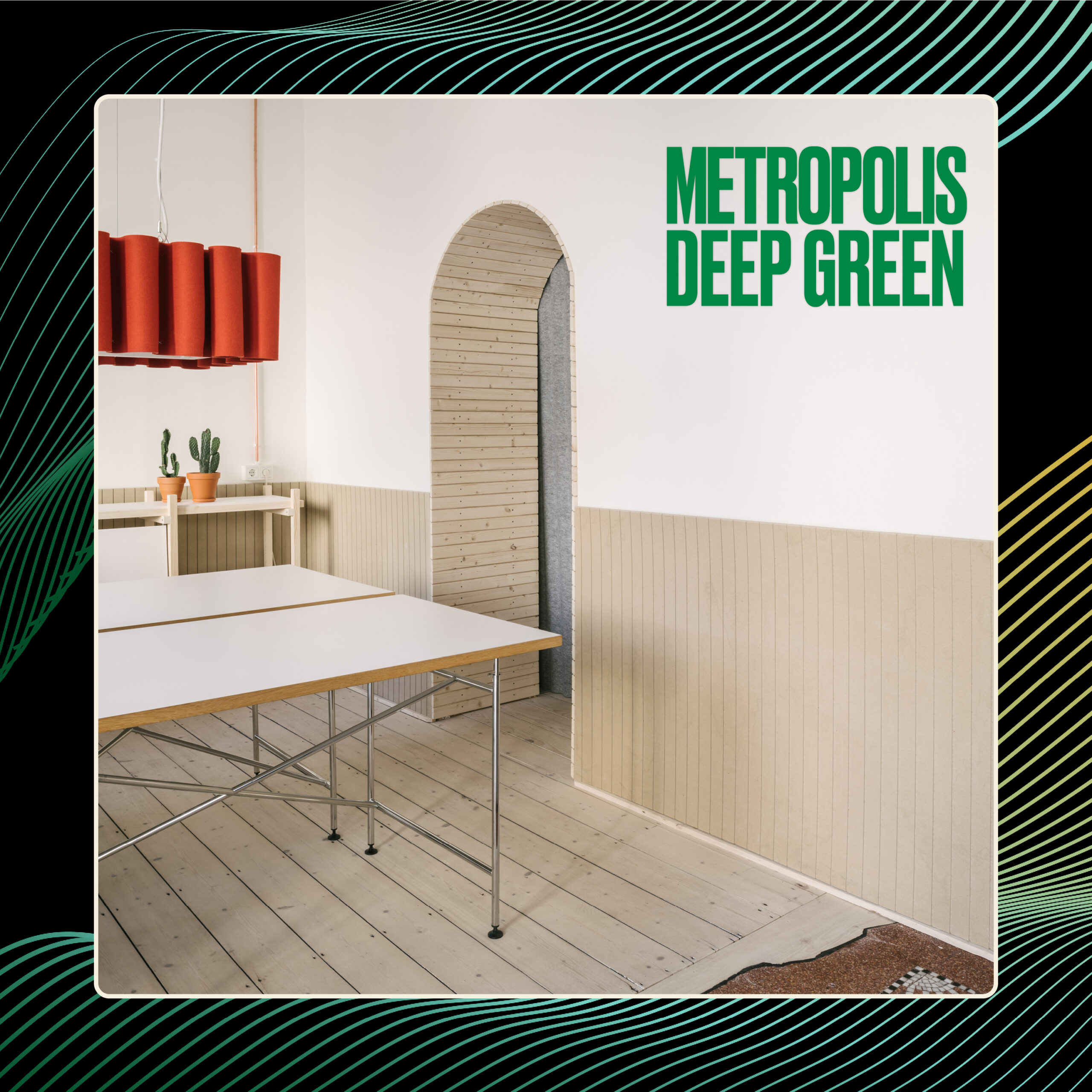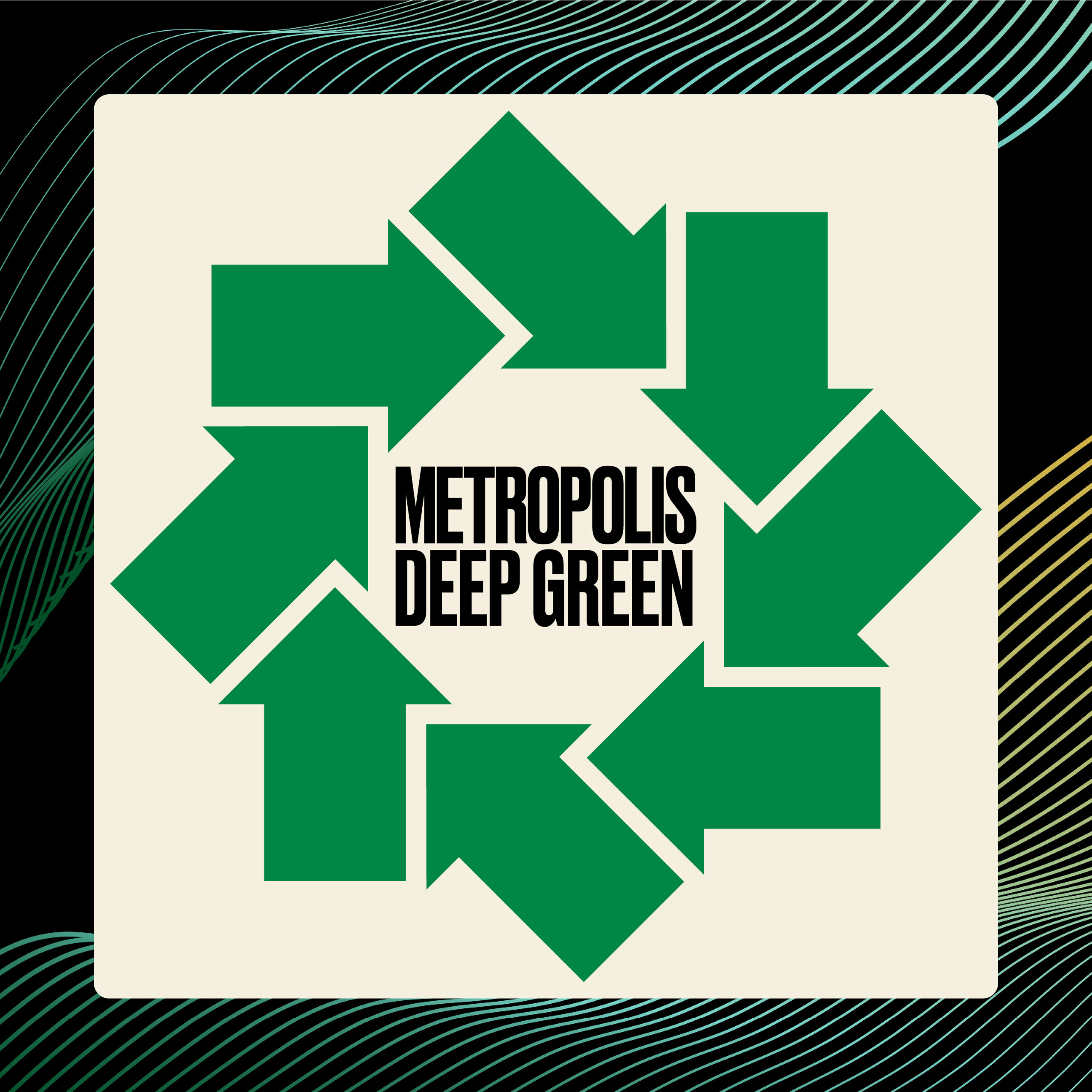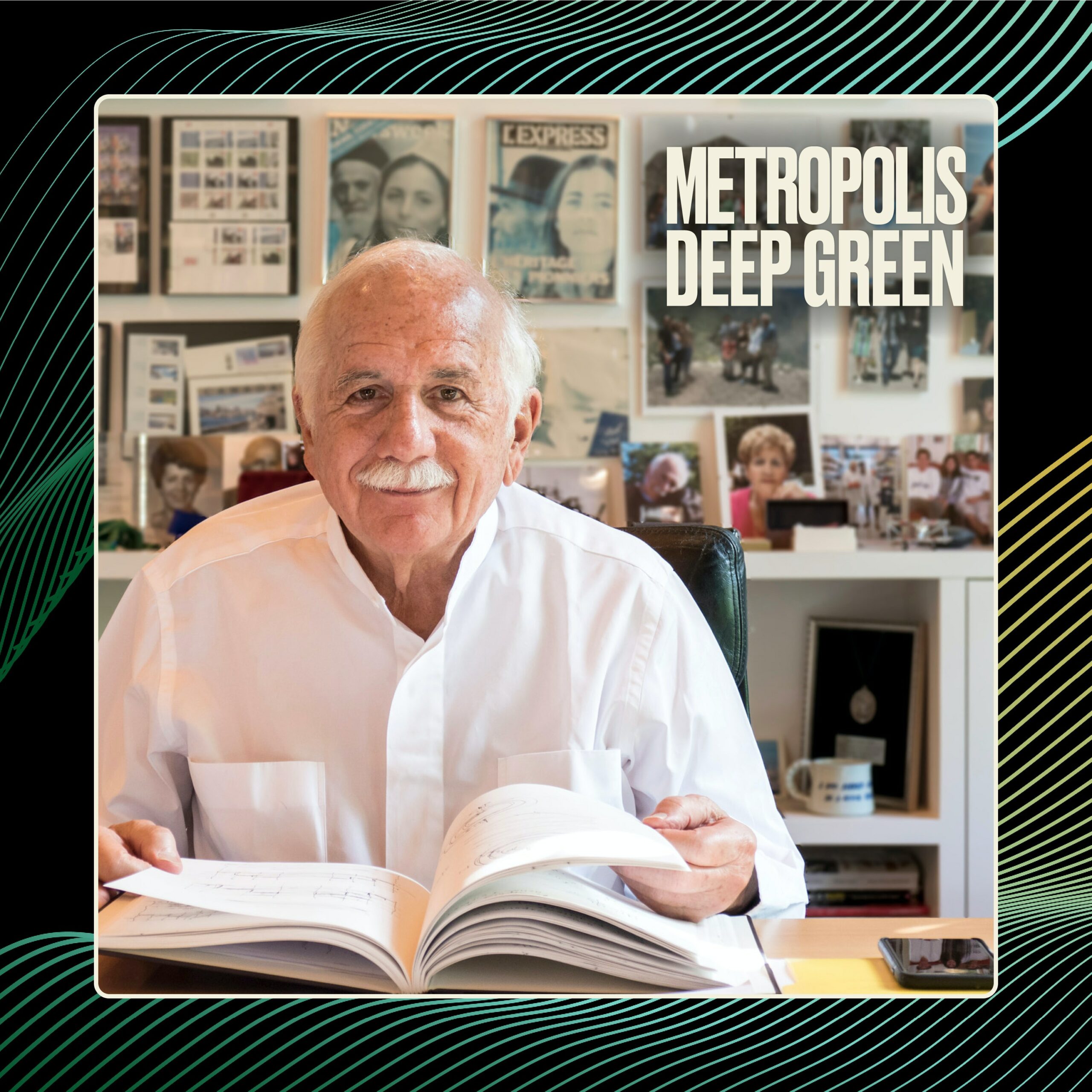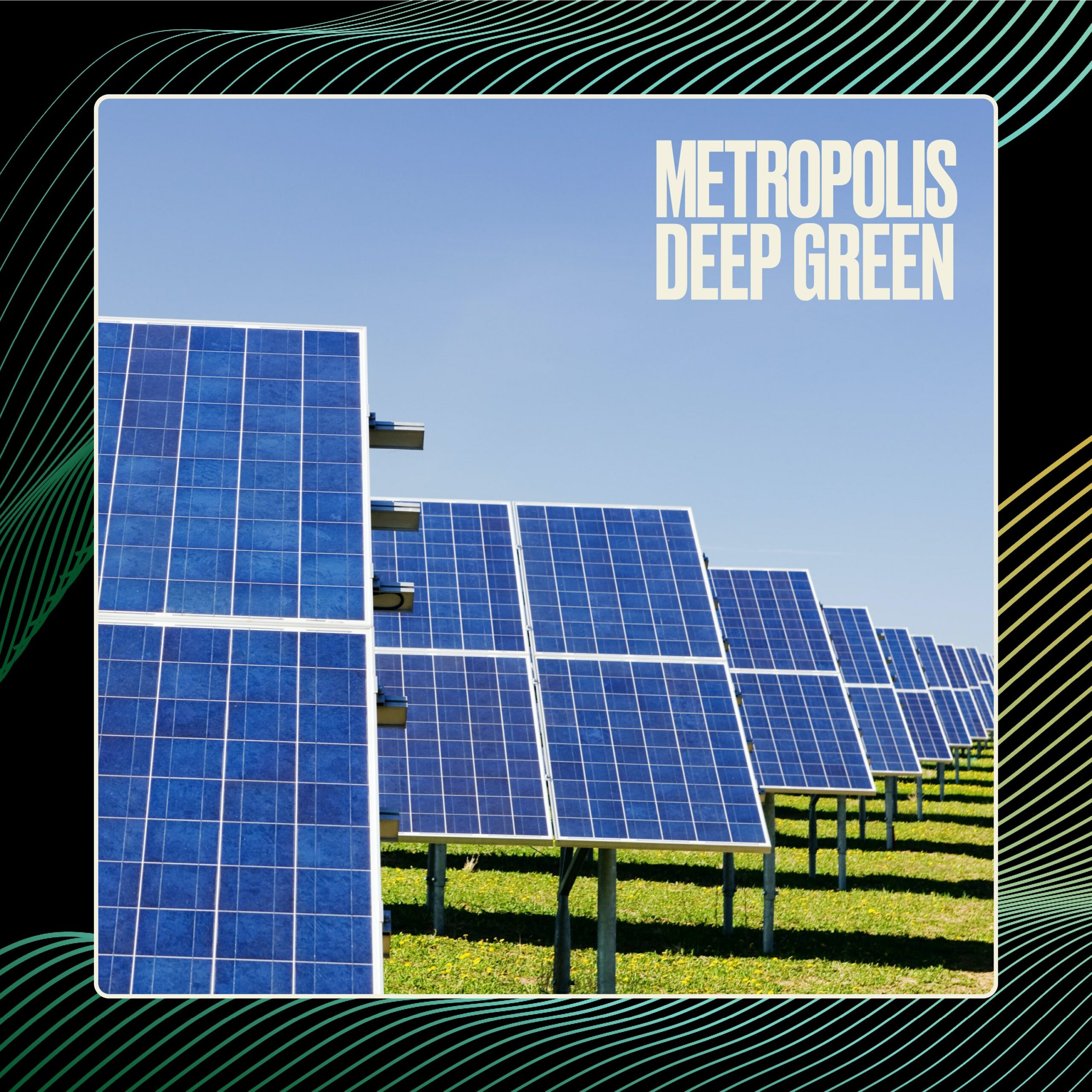In 2020, a FIFTH of all the energy generated in the United States came from renewable sources. That means wind, hydroelectric, solar, biomass, and geothermal energy are slowly but surely winning. Combined, they surpassed nuclear and coal-based energy for the first time in history. As we move toward cleaner sources, we have to get even more efficient in how we handle and use energy. And that means: batteries.
The eternal problem in electricity generation is when you generate too much energy, how do you store it so you can use it when your capacity to generate energy dips? Architects and engineers today have hit on a novel solution for storing energy—water.
While the idea of using water to store electricity is almost a century old, the two projects in today’s episode use water as a battery—but for heat. First, Metropolis executive editor Sam Lubell speaks to the visionary architect Carlo Ratti, who along with his architecture firm won a Metropolis Responsible Disruptors Award for Hot Heart, a proposal to heat the city of Helsinki using a set of floating basins in the Gulf of Finland.
Then, in part two, senior editor Kelly Beamon talks to Don Pawson, a director of engineering at SmithGroup, who designed the very first sewage waste energy exchange system in a commercial building in the U.S. Brilliant stuff.
Resources:
Carlo Ratti Designs a Floating Structure to Heat A City and Create Community: metropolismag.com/projects/carlo-ratti-hot-heart/
A Water Utility Office Designed to Rival Most Museums: metropolismag.com/projects/smithgroup-dc-water/
Connect with Metropolis:
Instagram: @metropolismag
Facebook: facebook.com/MetropolisMag/
Deep Green is a production of SANDOW Design Group.
[00:00:00] Avi: Welcome to Deep Green, a biweekly show about how the built environment impacts climate change and equity. Deep Green is brought to you by Metropolis. I’m your host, Avi Rajagopal, RA pile buildings are some of the biggest things we make as human beings. So if you want to know how we can do better for the environment and for all life on this.
[00:00:29] Avi: You have to understand buildings and cities and all the things that go into them. And that’s what we want to help you with here at Deep Green.
[00:00:41] Avi: Now, we generally like to be optimistic here at Deep Green. And so we’ll start today’s episode with a piece of good news. In 2020, a fifth of all the energy generated in the United States came from renewable sources. That means wind hydroelectric, solar biomass, and geothermal energy are slowly but surely winning. Combined they surpassed nuclear and coal based energy in the us for the first time in history. This of course doesn’t mean that we can take the pressure off of saving energy. In fact, as we move towards cleaner sources, we have to get more efficient in how we handle and use energy. And that means ?You guessed it batteries.
[00:01:31] Avi: This has been an eternal problem in electricity generation. When you generate too much electricity, how do you store it? So you can use it when your capacity to generate dips. It’s also a problem with energy efficiency. If buildings can somehow harness or capture energy at the time when it’s being wasted, whether that’s in the form of electricity or heat and use it when the building actually needs it, [00:02:00] then maybe the building doesn’t need to rely on the grid as much.
[00:02:05] Avi: And that’s a good thing, especially when, as we saw in Texas last year, electricity to supply, isn’t a sure thing in this age of climate change. So architects and engineers today have hit on a new solution for storing energy… in water. Okay, now don’t get me wrong, the idea of using water to sort electricity when a power plant generates too much of it, that idea is almost essentially old.
[00:02:34] Avi: It was first used at a plant in new Milford, Connecticut in 1930. The technology is called pumped hydro energy storage. It’s used all around the United States today and it works on a pretty simple principle. Imagine two bodies of water, one at a higher elevation than the other. When you make more energy than you can use, you just run a pump with that energy and send water up from the lower tank or pool or reservoir to the higher one.
[00:03:05] Avi: And then when you need that energy, why you just open the gates on the higher one and let that water rush down to the lower one, spinning a turbine along the way and generating all of that electricity back. Okay. So pumped hydro energy storage is great if you’re generating electricity, but what if the energy that you’re wasting or that’s in surplus, is in the form of heat? How then do you store that and use that energy at a different time when you need it? That’s what we’re gonna talk about today in two projects, both involving using water as a battery, but for heat. First Metropolis, executive editor, Sam Lubell speaks to the visionary architect, Carlo Ratti, who’s also professor at MIT, the Massachusetts Institute of [00:04:00] technology. Ratti and his architecture firm won a Metropolis responsible disruptors award this year for Hot Heart, a proposal to heat, the city of Helsinki using a set of floating basins in the Gulf of Finland. Then in part two senior editor, Kelly Beman talks to Don Posson, a director of engineering at Smith group who designed the very first sewage waste energy exchange system in a commercial building in the us.
[00:04:32] Avi: Yep. You heard that? Right? The building uses sewage as a battery. Brilliant stuff. Here’s part, one hot heart with Sam Lubell and Carlo Ratti.
[00:04:45] Sam Lubell: Welcome to Deep Green. Thanks for being on Carlo, we appreciate. This is Carlo Ratti, Italian architect, the director of MIT sensible cities lab, and he’s also the director of his own firm, Carlo Ratti associate and all around. I think, fascinating thinker in architecture.
[00:05:00] Carlo Ratti: Thank you. Thanks for having me.
[00:05:02] Sam Lubell: We’re here to talk about Hot Heart which was a winner of Metropolis first ever responsible disruptors awards. Also winner of a Helsinki Energy Challenge, and we are fascinated by this sort of archipelago of heat storing basins off the coast of Helsinki which store energy, provide recreation, but that’s a very basic description. I wanted to know if you can kinda let our listeners know in the little more detail about how this works.
[00:05:30] Carlo Ratti: Yeah, sure. Before I tell you how this works, you know, something interesting is actually how the competition was run by the city of Helsinki. You know, usually cities are very risk covered and cities usually look at, you know, what we call what, what are called best practices. So, you know, you look at what address cities have done and you copy that and you keep on doing it. But you know, that’s really the opposite of innovation. You’re basically locking the future into the past. You’re looking at things that were maybe ideas that were test 10, 20, 30 [00:06:00] years ago, they were successful and then you keep copying them and, you know, again, you know, perpetrating them into the future. And so the first thing that’s, that’s interesting is actually the city of Helsinki decided to do a different approach, approach that’s based on the idea of moonshot XPRISE approach, you know, basically you take a big challenge. You allow people to compete from all over the world and then you select kind of first, some families and then the winners, and this is what happens. And as you mentioned, yes, you know, we, we were selected the winners together, three teams of moonshot called the Helsinki energy challenge. And our idea is, is quite simple. It’s basically that a big problem when you use renewable is storage, and the battery storage is still very expensive to give you a sense, you know, today to produce a one megawat tower of energy in a renewable way that can cost you somewhere around 15 to $30 per megawat tower, you know, depends on where you are on the, on the planet. If you’re using sand or wind and so on, but to store it, it will cost you $200,000 to store one megawat tower. Well, our idea was simple. Given the here in the end, we need to turn energy into hot water in order to heat the city to do this sweet. Then why wouldn’t we use big call them thermal batteries, these kind of floating archipelago with , insulated islands with lot of hot water inside. And if you do that, actually the cost for one megawat tower is closer to $200. So three order of magnitude, less than if you were to were using regular batteries.
[00:07:37] Sam Lubell: That’s amazing. The question I have, when I think about, this sort of storage is how does it even work? How is it so well insulated that it keeps this water, you know, warm for so long. And how does that provide energy.
[00:07:51] Carlo Ratti: Yeah. So basically when you, when you produce a lot of energy mostly through wind, you know, sometimes actually prices very low. Even the average prices, you can consider [00:08:00] something around, you know, 20, $25 for a tower, but sometimes prices go down, sometimes they even become negative. So basically when there’s too much production, In Finland and many other countries, you get negative prices. Then in that case, you actually use the power in order to throw heat pumps in order to produce heat. And, you know, the floating islands are insulated in a standard way where we, we standard insulation, but then you can actually use the water from, from these islands in running through the city, through the city’s district heating system.
[00:08:30] Carlo Ratti: And so that becomes a sustainable way to, to heat. The main challenge, the mayor outline in the, in the competition.
[00:08:40] Sam Lubell: Right? So then you’ve created a warm water and then you just, you can sort of use it whenever necessary and you don’t have to create energy at a time like it’s gonna be a lot more expensive.
[00:08:51] Carlo Ratti: That is correct. And, and the other good thing is that because all of Helsinki is really already covered by this system. You just have to plug in into the existing pipe, so you don’t have to do work. You just, you know, get energy, which is used through wind. There’s a lot of new wind farms currently under construction or planned in, in Finland and in Scandinavia. And then basically just getting power from them and then, you know, alternating hot water. So just a simple battery in the middle between renewable tire production and the district system.
[00:09:23] Sam Lubell: I’m also fascinated with the idea that so you’re creating this system really efficiently, but you also have these what you’re calling floating forests. So some of these heat storing basins have domes over them and they become sort of bio domes in a way with the recreation inside them. Maybe you can tell about that.
[00:09:41] Carlo Ratti: Thanks for asking about that, and you know, there, there’s an important thing here for us is, you know, many cities now committed to very ambitious goals, like being nine, zero carbon by 2050, or even 2040. But the only way we can do that really is if people are involved, if you know, we are all involved, the only way we can [00:10:00] tackle the big, complex interdisciplinary challenges we have ahead on the plan is if we do it all together. Achieving the climate targets requires also behavioral change requires all of us to be part of that. And so that’s why we decided, well, if you do this big piece of infrastructure, how can we also make sure that people learn about it? The people learn about climate change, about energy, about the green transition and all of that. And so that’s how we decided we can use the top of the islands, you know, some people wanted to use the top of the floating islands to, to build real estate.
[00:10:31] Carlo Ratti: You know, that’s also an option. Some of the, some homes could be built, but the key thing is that we wanted to create attractions to the people from Helsinki, from Finland, from all over the world, really could actually go there and learn about infrastructure. By doing that, I think we, we achieve something I think is is important. That’s really making sure that, that we all understand about the challenges we’re facing and you know, how we can decarbonize.
[00:10:56] Sam Lubell: Right. And then while you’re, so while you’re learning, you’re also having some fun, um, because obviously, and I’ve been to Helsinki only in the summer though, but in the winter, I would imagine people are not getting out much. This is a great way to provide much needed recreation.
[00:11:09] Carlo Ratti: Yeah. Yeah, yeah, you absolutely. That’s why I think this might change where we are now in discussions with the city and they might also come up with our ideas, but everybody, like this idea of the floating forest and by the way, in Finland, it’s very, very common to spend a lot of time in the forest is, you know, well, during the winter.
[00:11:27] Carlo Ratti: And so the was, how can we do this? But, but in a different way. So again, on some of the floating islands, we got these biodomes, we decided to put four of them actually starting from the four key rainforest of the planet, central America, south America, African Asian. And, and so again, it becomes a way to take something that’s really very, very common and ingrained in, in the Finish culture, but actually give it a different meaning again, thanks to energy and thanks to the ability we have to control climate.[00:12:00]
[00:12:00] Sam Lubell: Wow. Especially having been to Helsinki I’ve I’ve been actually went to a sauna that was right on the ocean and there’s something magical about being out on the water.
[00:12:09] Carlo Ratti: Actually, some people are described this almost like, you know, giant sauna, because the idea is that you use a very, very minute fraction of the heat, which is stored inside the islands and use that imagine on 0.5%, so little, you use it again to change this ecosystem. It almost like you create a larger, so larger, you know, hot, hot pool and in a hot climate where again, you can really, people will learn about the infrastructure, but also again about climate change in climate remediation.
[00:12:39] Sam Lubell: And also the fact that sea levels are rising, I guess, to have these floating facilities seems like a, a smart idea as well.
[00:12:46] Carlo Ratti: Yeah, you, you are absolutely right. The fact that sea level is rising. That was also one of things that inspire us in terms of thinking about the floating infrastructure.
[00:12:55] Sam Lubell: You’ve really innovated in architecture. You did the time pavilion at this recent Dubai expo using microalgae to sort of remove carbon dioxide and store it. You did living nature, the natural ecosystem at Milan design week give so many examples. And I’m curious with this one, was there a specific inspiration, or how did you develop this concept?
[00:13:15] Carlo Ratti: I would say there’s something common behind the, the projects you mentioned, but also many other projects we we’ve been doing. We are working at the moment, you know. And that is really how we can find a better integration between the natural and the artificial. Architecture in the past century had a very clear separation between natural and artificial in the 20th century, but also before has always been a way to, for instance, impose some kind order on nature. And this kind tension between natural and artificial, we believe is really what brought to all the crisis of the anthrop. And so a lot of what we are trying to in our architecture is see how we can find new ways to blend, to blur the boundary between between natural artificial. There’s only two ways to do it. You know, one. Is to use [00:14:00] artificial intelligence sensors because they allow the artificial world to respond dynamically, almost like a living organism. But the other thing is really using nature as a building block for a lot of what we try to design. So, so the combination of the tool is really what we try to explore in, in a lot of our projects.
[00:14:20] Sam Lubell: Yeah, that’s interesting that you mentioned trying to merge nature and not conquer nature. I know you did the pavilion at Dubai expo, but this sort of popped into my head, this idea that Dubai now has this museum of the future. And to me it doesn’t feel that much like a museum of the future, cuz it’s very much about man conquering nature and it’s, it’s using robotic construction and you know, sort of amazing futuristic technologies, but it doesn’t really look at the merger with nature. And I see that sort of, as you’re saying as the future, more than these sort of man conquering nature, I don’t feel like that feels like a museum of the future to me.
[00:14:57] Carlo Ratti: It’s interesting. I just wrote an article just a few weeks ago for an op-ed. And the team was a bit, a bit similar. I mean, I believe Dubai, I like Dubai’s attitude of being passionate about future is one of the few cities on the planet, where again, you got a museum in the future, but you got also a future Dubai foundation. You got a minister for artificial intelligence in the government. So, you know, the country really is very projected into the future, but you’re right.
[00:15:24] Carlo Ratti: You know, sometimes. The future that you see is perhaps based on some values from the past century, the museum of the future is a, is interesting building next to the Dubai’s main road. It seems to engage just the artificial, not the natural world. But the future I believe will have to be a new alliance between the two.
[00:15:44] Sam Lubell: And speaking of the future, the, the Helsinki energy challenge in hot heart is reportedly supposed to be a reality by 2028. And this is actually going to happen. Is thatn still the case?
[00:15:57] Carlo Ratti: Yeah, we, we are working with the city. There’s a lot of excitement there [00:16:00] also other cities who, who were inspired by Helsinki were asking to do visibility studies in their city. It’s quite a simple concept. If you think about it and can play a role in, in many places, but we can play a role in cities at higher latitudes, like Helsinki where it’s cold and you got, especially if you already have district heating, it becomes very competitive .
[00:16:21] Carlo Ratti: So again, you know, cities such as Helsinki, Stockholm, Copenhagen, or, you know, cities, Scotland in Canada, but also you could be in reverse in a city such as Dubai where they, or Singapore, you know, the problem is the, opposite’s not about storing heat’s about store is about cooling. , and you can do not district heating , but district cooling, which is much more effective.
[00:16:39] Carlo Ratti: So you can think about the being, being interesting in a variety of cities. The first part I know we’re we are working with the city. Clearly the, the whole project is, is a major investment. So we’re working in phases. The phase one is through a smaller one that we can test and monitor. And from there to scale up to the fully fledged thing on paper, everything was very good.
[00:17:00] Carlo Ratti: But you know, when you go something. New it hasn’t been tried yet. You really want to, to go step by step and again, test a smaller, smaller, you know, we’re thinking the, the final islands at the moment are two, five meter in diameter, and we are planning to start with a 75 meter diameter element that we can test in the port.
[00:17:19] Carlo Ratti: And then from there, scale up to the whole arch work is progressing very fast. We are very excited about it. And again, enhancing in a bunch of other cities who are thinking that similar solutions might help.
[00:17:33] Sam Lubell: Well, that’s fascinating. And that you mentioned this could be, this could be performed by other cities, which brings up a couple questions for me.
[00:17:39] Sam Lubell: One, have any of these cities specifically approached you or this is possible? And, and two, maybe you can tell, talk to our, our listeners a little bit about how these distribution channels in these cities actually work cause it’s, to us, it’s sort of a new thing.
[00:17:54] Carlo Ratti: We are having in the moment conversations with a few other cities now because their city conversation probably would not [00:18:00] be fair to mention, but some of the major cities that are similar latitude and you’re thinking about they inspired by the helsinki competition are thinking about how, you know, they could also different scales develop as something similar. And, you know, going back to the second part of what you were saying again, the district heating system usually is something very good. Not every city on the planet already has a district heating network, but basically what you want to have is pipes going to the different homes and the condominiums and basically that’s how you distribute hot water or some kind of hot fluid in a centralized way across the city. And that usually is much better than, you know, producing heat locally in every house. You can use heat production in centralized way. Usually you combine that with energy production. So you do co-generation or the two, and then, you know, the water is, is what is distributed in, in the city.
[00:18:50] Carlo Ratti: And, you know, that is becoming more and more common, especially with the big ambitious targets. The cities are set into decarbonized by 20 50, 20, 40, or so requires moving, especially working on the infrastructure. So our infrastructure can become less carbon intensive and more sustainable.
[00:19:08] Sam Lubell: Well, it does seem like for whatever reason, and maybe you can have your finger on this more than I do, that the, the cities, like in Scandinavia , particularly when it comes to green energy, such as this and many others seem to be way ahead or at least a little ahead of, of a lot of the rest of the world. Do you find that there’s any reason?
[00:19:26] Carlo Ratti: Yeah, it’s, it’s a very good, good question. I’ve been asking myself the same thing.
[00:19:29] Carlo Ratti: Also, you might expect, you know, that some cities in countries where it’s quite cold actually might be the ones not acting very fast and might even like, try to think about for many winter months is, is almost having a positive impact on there, but actually they’re very seriously fighting climate change. I was think about a number of reasons. You know, one of them is that today we’re seeing the extremes of climate change actually in Northern latitudes. For instance, as you, as you know, we’ve read in the United States, a lot about Alaska, which is warming much, much faster in the rest of the, the country. So somehow some of [00:20:00] those countries are warming faster is also, you know, shows the effects of climate change in a much more compelling way. And there’s something else that’s that’s interesting. The thing about Scandinavian countries is how they’ve been able to work within clearly capitalist framework, but also to give more agency to the state to do different things. You know, some people remember some of the discussions that for instance, Bernie Sanders was having about Scandinavia as a model. So somehow, you know, they are also able to mobilize citizens in a way that you don’t see in some other countries that are a little bit more individualistic in the way society works.
[00:20:37] Sam Lubell: Right. I mean, how about where, where your office is based? Well, you’re, you’re split between U.S and, and Italy, but I don’t think either of those countries has reached even close to where some of these countries are.
[00:20:49] Carlo Ratti: Yeah, your’re right. But I think at the same thing, there’s another thing to say.
[00:20:52] Carlo Ratti: However, is that I think a lot of change today is happening at the city level, you know, is cities. And, and here we see a lot of innovation in the us as well. You know, I’m thinking about Michelle Boston and climate plan, and I’m thinking about cities in the United States, in Europe, Italy, the mayor of Milan.
[00:21:09] Carlo Ratti: Is really pushing a lot of deeper urbanization is a, is very exciting experiments. So there’s another thing to say that yes, you know, there’s something to be said about the national level and certainly countries are more conducive to some of this action, but battle really is been thought more and more at the level of cities.
[00:21:25] Carlo Ratti: And, and so things are more nuanced in same country. You can have some cities can be backward, but you also find the pinnacles of innovation. That happens in the U.S, in Italy, all across Europe in Asia, Singapore is innovating a lot, Dubai in different ways. Again, the future of orientedness of the city is also leading to different type of innovation. So I think, you know, cities are going to be the battleground for, for winning the climate battle.
[00:21:50] Sam Lubell: That’s an interesting, interesting perspective, like to say, all politics is local. Maybe all innovation is local to some extent too. And the last question I have [00:22:00] is just your model of innovation, because you have the advantage of not just being an architect, but also you’re trained as an engineer and obviously you teach at MIT and youve done quite a bit of research, not just on architecture, but on energy and, and other parts of technical expertise that most architects don’t have. So maybe talk about how that training and, and work in both fields really makes you more innovative?
[00:22:26] Carlo Ratti: Yeah, thanks for mentioning this know you’re right. There’s also my studies. There’s been some engineers and architectures and computer science and mixing of. But I think the key thing is to avoid some of the arrogance that architects had in the past century, in the past century was the idea that just one person single handed could make decision for millions of people and, and find solutions for, you know, the big challenges of the time. Think about, you know, what comes mind is presenting the plan was. And for Paris proposing to raise the city affecting millions of people, right? Without even bothering to ask just one person single hand, You know, which was this beautiful picture from that time in the 1920s is the unveiling, the model of the plant wast. It’s the the hand of the architect, but almost like the hand of God you making decisions.
[00:23:17] Carlo Ratti: Important thing is that today we, we need to, to be aware of the fact that the only way we can tackle some of the big challenges ahead is if you do it together and again, different people, different disciplines coming together and, and working together. I, I like to think about a future role of architects and designer. That’s something that you could call like a choral architect, an architect, able to harmonize different voices to, to really bring different people together, to tackle the big challenges we, we are facing.
[00:23:43] Sam Lubell: I like it. That’s a good model to conductor, I guess. , I don’t know what his role would’ve been, but certainly he would’ve been collaborating as closely with everybody. He, would’ve more ordering.
[00:23:54] Carlo Ratti: If you want, this is a lot about top you to the way [00:24:00] society, more democratic, less to more or less open societies. It applies, you know, we are seeing now a big fight between Open and top down and open bottom and top down systems, for instance, in the, in the terrible war in Ukraine.
[00:24:15] Carlo Ratti: And I think there something to learn from that also for our own disciplines systems are the one that can really empower people. They’re more resilient. And I think that the only way we can tackle the big challenges ahead.
[00:24:28] Sam Lubell: Oh yeah. I think that’s well put and obviously our hearts go out to everybody suffering from that war. And I don’t think anybody anticipated that this kind of. Existential battle between these different types of governing and, and a being would kind of reach where it has already. But, but anyway, this is fascinating and really Carlo really appreciate you being on and, and talking to us about this, and we’re excited to see it move ahead and to see what else you come up with.
[00:24:53] Carlo Ratti: Thank you. Thanks for having me and you know, great conversation and looking forward to continuing with you and with everybody else listening
[00:25:00] Avi: Deep Green will be back after a shark commercial break.
[00:25:08] AD: Deep Green is brought to you by Caesarstone a Metropolis sustainability next partner, Caesar Stone’s sustainable surfaces are inspired by nature specify premium. Port surfaces such as their white light and outdoor collections in both residential and commercial projects designed and manufactured with the planet in mind, visit Caesarstone us.com to find out more .
[00:25:35] Avi: Deep green is back with part two of our episode on water as a battery part two, the DC water headquarters. Designed by Smith’s group. This office building for a water utility in Washington, DC has earned a lead platinum certification from the US green building council. That’s the highest [00:26:00] certification for sustainability and architecture from the US GBC and a 2021 planet positive award for Metropolis. So this is a sustainable building and part of what makes it so efficient and responsible is its sewage waste energy exchange system. Here’s Kelly Beaman in conversation with Don Possonon.
[00:26:22] Don Posson : I’m Don Possonon, I’m Smith groups, corporate director of engineering. I’m based out of San Diego, California.
[00:26:30] Kelly: Don I’m so happy that you accepted our invitation to have this conversation today about the Smith group designed DC water headquarters. We’re so excited about this project, especially three years after it was completed, cuz it’s, it’s a municipal office building for the district of Columbia, sewer and water utility.
[00:26:50] Kelly: But that said it incorporates some very cutting edge green technology that we don’t ordinarily associate with municipal offices. It’s so innovative that it is one of our planet positive award winners for its impact on people, and the environment. We explored that in Metropolis is January, February issue in an article where we, we talked about the unique building skin that is engineered for self shading and cooling a lovely green roof and extensive rainwater harvesting system.
[00:27:23] Kelly: But today you graciously agreed to speak with us about a really big feature that has attracted a lot of attention. And that’s the sewage waste energy exchange technology. Could you explain what the system does I guess, to start with?
[00:27:38] Don Posson : Thank you. Yeah, no, it’s an interesting concept. Probably blows the mind of most people when we first explain what it actually is. It’s, you know, it is creating something very unique for commercial office building typical commercial office building, you know, especially in the Washington DC area would have a cooling and a heating system because of the weather and the climate in the middle Atlantic region. So it would have a [00:28:00] chiller system to keep it cool during the summer. And a boiler system to keep it warm in the winter. The boiler system uses natural gas and a chiller system use electricity.
[00:28:11] Kelly: These have been eliminated in this instance because of this unique system, correct?
[00:28:15] Don Posson : Exactly. In, in lieu of those traditional systems, we’re really tapping into a thermal energy source that really resides underground in all major cities, which is city sewer systems.
[00:28:26] Don Posson : The US department just admitted there’s 350 billion kilowat hours of energy, just sitting in the sewer systems of our cities. And so what we’re doing is tapping into a sewage pumping system that the DC water sewer district had right on site where this headquarters office building was being built and basically tapping into it with the heat exchanger that then extracts heat in the wintertime and brings that heat into the building to keep up warm.
[00:28:54] Don Posson : Burning fossil fuels within the building and having if you’ll fight a boiler. And then in the summertime, when you would traditionally be cooling a building and getting rid of heat, the traditional system would be dumping that heat to a evaporative cooling tower, you know, in DC, that’s really the most energy efficient way to do it, but it also uses energy and it uses a lot of water, an evaporative cooling system for a building, office building of this size, you know, 160,000 square feet would, would probably use as much as a million gallons of, of potable water every year, just to make up water, to cooling tower system. So instead of using that to get rid of the heat off of the chiller system, we actually take the heat. , that’s coming off of our chiller system and dump it back to the sewer system that then goes down to the treatment plant and dissipates naturally rather than having to use a cooling tower within the building.
[00:29:46] Don Posson : So we get rid of two. Major pieces of equipment that you would traditionally see in a building, a natural gas fired boiler and a water consuming, Cooley power on the cooling side of things. So very [00:30:00] unique system. And we’re pretty excited about how well it’s performing right now.
[00:30:04] Kelly: It just sounds like a technology that we should have been using a while ago.
[00:30:10] Kelly: How new is the technology and, and what’s the origin of it. If you don’t mind?
[00:30:15] Don Posson : With this project, it was the very first in the us to be applied to a commercial building of any kind. There’s been some, you know, sewage heat exchange going on at a, like a sewage treatment plant scale, you know, where they take care of their own heat onsite at a treatment plant, but never had a building scale before we really had to do a little bit of research about where it had been done at a commercial.
[00:30:37] Don Posson : Really the technology had existed around the world, but not here in the us. There are installations in Canada, our neighbors to the north, there are installations in Germany and there were installations in China and each of ’em were built around a particular piece of equipment in each one of those countries it really had been being used at commercial scale for probably 10 or 15 years. , pretty success. We thought the, the idea of exchanging energy with this sewage pump station, which had, you know, millions of gallons of raw sewage running through it on this site was an opportunity for us. So it wasn’t something we were out looking for.
[00:31:15] Don Posson : It was just out of an idea. an innovative idea that we really, our team felt had some potential and it was good that we actually found some commercially available equipment to allow us to actually do.
[00:31:27] Kelly: The big gesture of getting rid of those two energy sucking systems, right? The HVAC, I mean, those, those two components of the heating and the cooling just sounds like certainly a, a savings for the building over time in terms of money, as well as just pure energy, economically speaking. Can you speak to the savings maybe as a percentage?
[00:31:54] Don Posson : Yeah, we did several energy studies, energy analysis, looking at this system [00:32:00] compared to other traditional more high performance systems. A similar system would be like a geothermal system. So instead of having a, a natural gas boiler and a cooling tower, you would use a geothermal field out somewhere on site.
[00:32:13] Don Posson : To extract heat or get rid of heat in the summertime instead of using the earth as that energy sink, we’re actually the sewage that’s in sewer systems in Washington, DC. And the reason why it actually makes it even more energy efficient is because the temperature of it. So the temperature of that sewage is always somewhere between 60 and 70 degrees.
[00:32:32] Don Posson : So when we use geothermal, we’re exchanging, we’re trying to pull heat out of the earth, which at some of these deep Wells, it could be 40 to 50 degrees. So it’s a little less energy efficient to pull it out. So when we did energy, comparing it with this similar system of geothermal. Versus a traditional system with boilers, we found we could get as much as 48 to 50% energy savings from a, just a general code compliant system, which was probably five to 10% more energy, energy efficient than a traditional high performance geothermal system.
[00:33:04] Kelly: Wow. Well what’s to keep this from being duplicated in other cities for their sewage treatment?
[00:33:11] Don Posson : Well, I mean, we were lucky that we were building this for the water and sewer authority in Washington, DC, because the, the biggest hurdle is the regulatory. Hurdle of getting your sewer authority to say, it’s okay to exchange energy with that sewage system, because it’s basically, once it leaves your building, it becomes their property.
[00:33:33] Don Posson : They wanna know what that impact is and how it would impact their system. But I think they just will probably accept this slowly. And then over time kind of watch how it has an impact on their treatment plants.
[00:33:46] Kelly: Wow. In that case, is it possible? In the near or distant future that a system like this could generate enough energy for use beyond its own site.[00:34:00]
[00:34:00] Don Posson : Oh, yeah, absolutely. Absolutely. And you know, and there are examples of that in operation around the world, Vancouver called the falls Creek energy center, which was done, I think for the can’t remember what year Olympics that, that happened there in Vancouver to actually heat the Olympic village, which was the housing for the Olympics in Vancouver. And it was kind of a city scale system where they extracted it out of the city sewer system. And then they piped a heat exchange medium around to an entire development, which was the Olympic village and which eventually got turned into a mixed use residential development for the city itself.
[00:34:37] Don Posson : So that then becomes an energy resource for the entire city. So they’re constantly pulling the energy out of the sewer system and giving it back to those districts. So you actually are paying for the energy coming back from the utility. And I think that’s another thing that you’ll probably begin to see is that these utility companies will start to regulate this energy because, you know, if they start distributing it and scale outside of a one building, there’s a cost to that to them.
[00:35:04] Don Posson : And so they’ll probably begin to. Have some, you know, fee associated with your tapping into that and actually using it for your building,
[00:35:12] Kelly: that possibility must make it more attractive to them to consider then as another source of revenue.
[00:35:18] Don Posson : Oh, absolutely. And I think most of the cities that are starting to see this being implemented have probably already started to look at how they can do that and how they can help support that.
[00:35:29] Kelly: Wow. As an engineer, I don’t know how, how much does it excite you? Especially given that you’ve seen a lot of different systems.
[00:35:38] Don Posson : I’m very excited. I mean, we have lots of projects where, you know, we really get excited when we see we’re using waste energy. It’s one of the best ways to make the overall energy efficiency better is just to get rid of the waste. The things that are just being wasted, that we don’t even know about. And this is one of those, you know, waste energy streams that has existed [00:36:00] for a while. The more we can recapture that, definitely the more excited I get. I just, I hate seeing that waste energy. We do that with airflow, you know, and the laboratories that we design, where we get this energy being exhausted out of laboratory building.
[00:36:14] Don Posson : And it’s just, you know, putting energy out the top of sheet metal fan stack, and we find ways to capture that, cuz we don’t wanna waste that energy. We wanna keep it in the building. And so these sewage waste streams are the same way would put energy into hot water in our buildings to heat it for our uses inside.
[00:36:32] Don Posson : And then we just let that energy go down the drain and leave the building rather than trying to keep it, you know, keep that energy. And, you know, I hope more people get interested in it. and explore it.
[00:36:43] Kelly: I wanna be first in line I want my house to be first in line.
[00:36:47] Don Posson : We’re gonna get you. We’re gonna get you to carbon neutrality. That’s what we’re gonna get you to. That’s that’s the whole intent of this is keep, keep everything neutral with the energy that’s coming in and the energy that’s going out.
[00:36:58] Kelly: I’m thinking this sounds a little bit familiar. Maybe on a residential scale of like some heat exchange. I don’t remember grasping the, the true extent of the waste of the wasted energy.
[00:37:12] Don Posson : I mean, years ago, you know, there were these There, there were almost like a coil around your shower drain pipe to try and, you know, recover some heat, inner resonance. You know, the shower is one of the areas where you really use a lot of hot water every day, every day. And, and that got popular for a while, but really, you know, when you step back, there’s so many other areas where we use heat in our water systems like dishwashers, washing machines. I mean, the energy that goes into some of those really starts to add up. When you look at it and when you start to get at some of these industrial or laboratory or hospital systems, they pump a, a lot of energy, especially hospitals, you use it sterilizers to keep things clean and that, you know, super hot water goes down the drain after they’ve sterilized everything, [00:38:00] just an amazing amount of energy that can just simply caught before it leaves the building and brought back in and not even make it to the sewer system, you could do it. Right.
[00:38:08] Kelly: Why do you think that those systems aren’t proposed more, especially for new developments and then you don’t have to go on the record. if you say something like lobbyists or whatev, you know, I, because that’s what I’m thinking right away, right.
[00:38:22] Kelly: Is that somebody’s lobbying for. The conventional, all of the, the, the businesses, the industries that, that are part of the supply chain for HVAC systems, for the servicing, for the parts. And that is sort of the creating like a, a barrier, right?
[00:38:39] Don Posson : Yeah. You know, I think some of it is just the new technology. We just, no one has ever done it that scale in the us, you know. And the other is too is a little bit of the factor. You know, if you think about the waste coming out of a building, it’s not just sinks and showers, it’s toilets and everything else. So getting people to think that we’re gonna capture that all of that, you know, yucky waste and pull energy out of it.
[00:39:04] Kelly: You, you certainly are dealing with clients at a, a high level, not like an individual homeowner and they still have that?
[00:39:11] Don Posson : Sometimes because they think that it’s, that it is gonna be a lot of work to get it extracted, you know? Okay. And that’s, that’s been a little bit of the game changer that we found is some of these equipment suppliers that we found have developed equipment to be able to do this pretty inexpensively to, to run that kind of raw sewage waste through a heat exchanger, to be able to pull the heat out. You have to do some stuff to it without getting into too much detail. You got somewhat a little. You have to settle the solids out and get down to at least what they call a gray water water to exchange the energy with your traditional water systems in your building and, and in the past, those were complex and expensive.
[00:39:54] Don Posson : Well, they’ve got them now to where they’re pretty simple and straightforward of how they do that with a package unit, you can just [00:40:00] drop in and building like an apartment building or something, and then just start exchanging that energy right away. And without a lot of maintenance.
[00:40:07] Kelly: Yeah. Especially when you say gray water, I think, you know, you say sewage and people automatically think toilets, but gray water is, as you said, from the shower, from the sink, you think at least we could start there.
[00:40:21] Don Posson : If you can just basically isolate those gray water sources, you have very little, you need to do to exchange the energy from those that makes it even more cost effective.
[00:40:31] Kelly: Are you thinking of doing this at your house?
[00:40:32] Don Posson : Not yet may in the future.
[00:40:45] Avi: Deep Green is produced by Metropolis. I’m your host Avi Rajagopal. And this episode was reported by Kelly Beman and Sam Lubell. The podcast is edited by Hannah Viti with support from Lauren Voker. You can read more about both projects, hot heart and the DC water headquarters on Metropolis mag.com. A big thanks to today’s guests and to all the folks at standout design group who support Deep Green.
[00:41:14] Avi: We’ll be back again in two weeks. With another episode of Deep Green available, wherever you get your podcasts.

